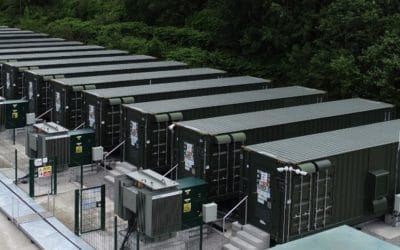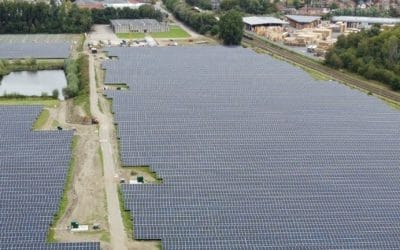The UK government has set legally binding targets to significantly reduce the country’s greenhouse gas emissions by 2050. With business and industry accounting for around 25% of the UK’s carbon emissions, this has led to the introduction of a raft of legislation, designed to make organisations of all sizes and industries, operate in a more environmentally friendly way.
But for businesses, understanding and complying with UK energy policy can be a complex area to navigate. With so many different levies and schemes in place, it can sometimes prove difficult to stay on top of all the obligations. However, with most carrying stiff financial penalties for non-compliance, that can be an expensive mistake to make.
Another important factor to consider is that many policies have the potential to significantly impact on company finances. That means it’s vital that businesses not only understand their responsibilities, but plan ahead for how they will be managed.
Climate Change Levy (CCL) increases
The CCL is a tax placed on energy that is delivered to commercial users. It applies to all businesses with very few exceptions. Some important changes are on the way for the scheme, which could have serious financial implications for businesses:
- In April 2018, the rate increased by around 2.5% compared to 2017 / 18 levels
- In April 2019 it will again increase, this time by around 45% for electricity and 67% for gas.
Renewable energy is exempt from the levy, so one way to mitigate the increasing costs is to lower the use of fossil fuels and improve energy efficiency. These changes will themselves benefit commercial energy users by lowering long term energy expenditure, making them a win-win for businesses.
Certain energy intensive industries will also be able to benefit from reduced rates if they enter into a climate change agreement (CCA) and actively pursue energy efficiency.
- For more information about CCL click here.
- For advice on lowering commercial energy use and improving energy efficiency, including fully funded models, click here.
CRC Energy Efficiency Scheme (CRC)
The CRC Energy Efficiency Scheme is a mandatory carbon emissions reporting and pricing scheme that covers large public and private sector organisations. It aims to incentivise energy efficiency in both the public and private sectors.
CRC applies to organisations who use more than 6,000MWh per year of electricity and have at least one half-hourly meter settled on the half-hourly electricity market.
Participants need to measure and report their electricity and gas supplies annually. The CRC registry then calculates CRC emissions in tonnes of carbon dioxide (CO2) from the data submitted.
Organisations need to buy allowances from the Government or the secondary market, to cover the reported emissions. If they make improvements and decrease their emissions, then their costs under the CRC will also lower.
- For more information, click here.
Minimum Energy Efficiency Standards (MEES) for landlords
MEES applies to any landlord of a commercial property. While Building Regulations ensure that new properties meet current energy efficiency standards, MEES was introduced to help tackle the UK’s older buildings.
The regulations came into effect in April 2018 and mean that commercial landlords cannot renew existing tenancies, or agree to new lets, without the property achieving an Energy Performance Certificate rating of ‘E’ or above. The consequences of failing to comply with MEES are serious. There is the potential for a financial penalty to be issued. Dependent on the type of infringement and length of non-compliance, this could reach from £5,000 up to £150,000 for a commercial property.
If a property is not compliant then it could also be devalued, which is likely to lead to problems with bank security.
Existing tenancies also won’t be allowed to continue past April 2023, unless the minimum EPC rating has been reached by that dat.
The Government estimates that 18% of commercial properties currently hold the lowest EPC ratings of F or G, so MEES is likely to apply to thousands of landlords.
While the bar is currently set quite low, it is likely that the minimum standard will be raised again in the future. It would therefore be wise for landlords to address the energy efficiency of their properties with that in mind. The good news is there are many small changes and upgrades which can be made for a big impact and the scheme’s ‘golden rules’ also offer some financial protection.
- For more information, see: Government guidance for landlords / Advice for landlords on complying with MEES
Changes to exemptions for Energy Intensive Industries (EIIs)
A number of initiatives are currently in place to help protect EIIs from the cost of renewable policies. However, planned changes to these exemptions are set to have a significant financial impact.
While some companies will benefit from the changes, other non-exempt customers will end up having to pay more – as the cost of the scheme is paid for by all non EII exempt electricity users.
The exemption changes had initially been planned to come into force from April 2017, but their introduction has been delayed and is now expected to happen in 1 January 2018, subject to certain criteria being met.
- For more information you can read the Government’s response to a consultation on ELL exemptions by clicking here.
ESOS compliance
ESOS is a mandatory energy assessment scheme that applies to all organisations with more than 250 employees, or an annual turnover exceeding €50m and a balance sheet exceeding €43m. It’s estimated that around 7,300 large UK enterprises fall under the scheme.
Organisations that meet the criteria must carry out ESOS assessments every four years, or face substantial fines. These assessments are audits of the energy used in buildings, industrial processes and transport, and will identify cost-effective energy saving measures.
While implementing the measures is not currently compulsory, the audits set out a roadmap for how businesses might reduce their emissions and energy expenditure. This presents an opportunity for businesses, with the potential advantages being significant, especially for high energy users. Lighting and heating being two areas where large savings can often be made.
- Find out if you qualify for the Energy Savings Opportunity Scheme (ESOS) and how to comply by clicking here.
- For advice on lowering commercial energy use and improving energy efficiency, click here.
You may also be interested in:
- What does ‘behind the meter’ mean?
- Minimum Energy Efficiency Standard (MEES): a complete guide for businesses
Anesco is the UK’s leading energy efficiency company and works with businesses of all sizes and across all industries. For specialist advice and information on reducing commercial carbon emissions and improving energy efficiency, contact the Anesco Commercial & Industrial team for an informal chat on 0845 894 44 44.






